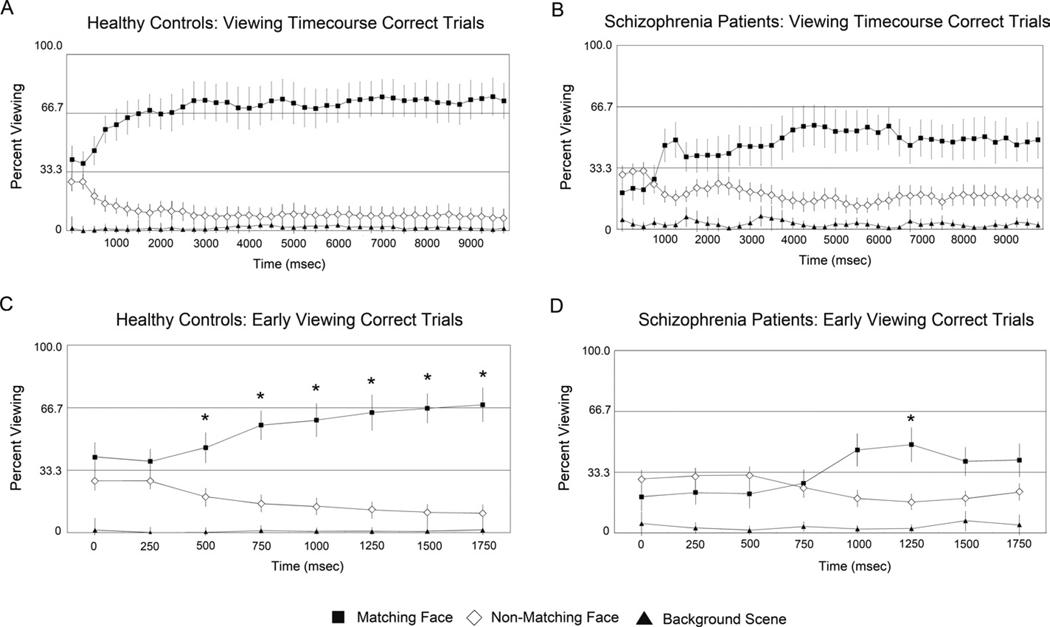Figure 5.
Correct trials only analysis. Average proportion of viewing time allocated to display elements for all correct trials, over the entire 10-sec trial for control participants (Figure 5A) and schizophrenia patients (Figure 5B) as well as the first two seconds of test display viewing for controls (Figure 5C) and patients (Figure 5D)
Bars plotted around the means represent 95% confidence intervals. For C and D, starred values indicate greater than chance (33%) viewing of matching face for an individual time bin during the first two seconds of display viewing, p < 0.05, Bonferroni corrected. Similar to the analysis of all trials, control participants show preferential viewing of the matching face within 500 msec of test display presentation (Figure 5C), with consistent viewing of the matching face at 70 – 75% throughout the 10-sec trial (Figure 5A). For schizophrenia patients, one time bin (1250 ms) does reach significantly greater than chance viewing (Figure 5D), but this preference is not a strong or as consistent as the control group, with viewing of the matching face never exceeding 60% for any individual time bin across the entire trial (Figure 5B). These data indicate that for the schizophrenia group, eye-movement measures of relational memory are abnormal relative to healthy controls, even for trials on which the face-scene pair is successfully identified during a subsequent recognition memory test.

